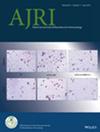Role of Inflammatory Markers and Doppler Parameters in Late-Onset Fetal Growth Restriction: A Machine-Learning Approach
Abstract
Objectives
This study evaluates the association of novel inflammatory markers and Doppler parameters in late-onset FGR (fetal growth restriction), utilizing a machine-learning approach to enhance predictive accuracy.
Materials and Methods
A retrospective case–control study was conducted at the Department of Perinatology, Ministry of Health Etlik City Hospital, Ankara, from 2023 to 2024. The study included 240 patients between 32 and 37 weeks of gestation, divided equally between patients diagnosed with late-onset FGR and a control group. We focused on novel inflammatory markers—systemic immune-inflammation index (SII), systemic inflammatory response index (SIRI), and neutrophil-percentage-to-albumin ratio (NPAR)—and their correlation with Doppler parameters of umbilical and uterine arteries. Machine-learning algorithms were employed to analyze the data collected, including demographic, neonatal, and clinical parameters, to develop a predictive model for FGR.
Results
The machine-learning model, specifically the Random Forest algorithm, effectively integrated the inflammatory markers with Doppler parameters to predict FGR. NPAR showed a significant correlation with FGR presence, providing a robust tool in the predictive model (Accuracy 77%, area under the curve [AUC] 0.851). In contrast, SII and SIRI, while useful, did not achieve the same level of predictive accuracy (Accuracy 75% AUC 0.818 and Accuracy 73% AUC 0.793, respectively). The model highlighted the potential of combining ultrasound measurements with inflammatory markers to improve diagnostic accuracy for late-onset FGR.
Conclusions
This study illustrates the efficacy of integrating machines with traditional diagnostic methods to enhance the prediction of late-onset FGR. Further research with a larger cohort is recommended to validate these findings and refine the predictive model, which could lead to improved clinical outcomes for affected pregnancies.
Trial Registration
ClinicalTrials.gov identifier: NCT06372938

 求助内容:
求助内容: 应助结果提醒方式:
应助结果提醒方式:


